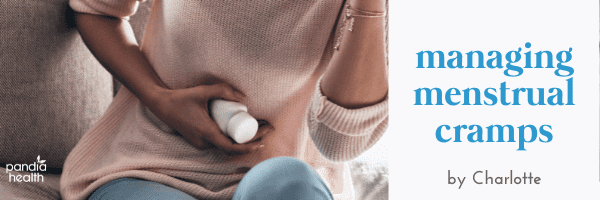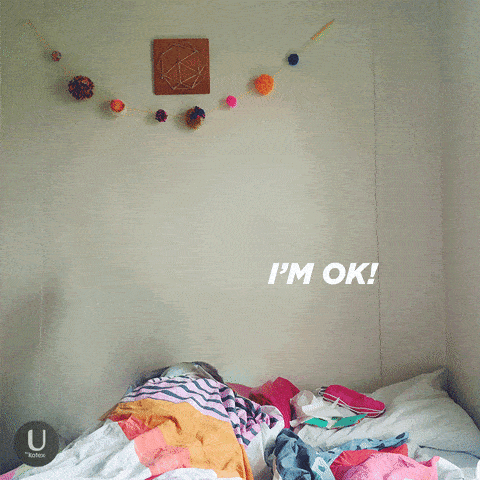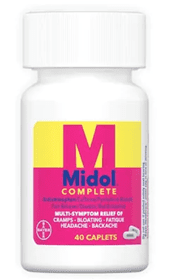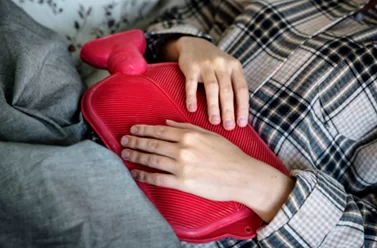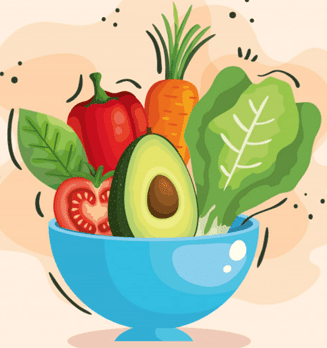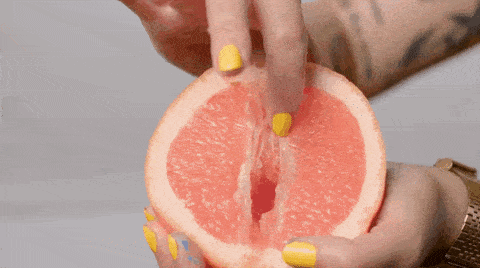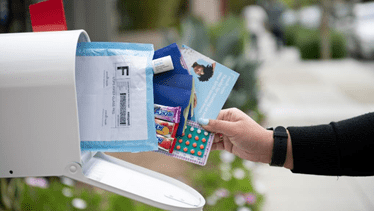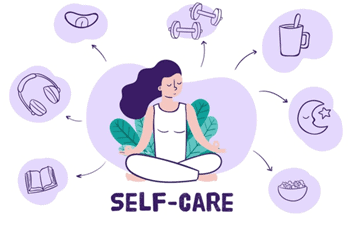The period pain that often happens with an individual’s menstrual cycle can be debilitating, so much so that it may begin to stop you from your daily tasks. Thankfully, it doesn’t have to be this way forever. There are many methods and products that you can use to relieve period cramps – most of which are relatively inexpensive and simple.
What are menstrual cramps?
Menstrual cramps are pains that typically occur in the lower abdomen before, during, and shortly after the menstrual cycle. For most uteri-bearing people, the pain begins one to three days before the start of an individual’s period, peaks 24 hours after bleeding starts, and stops two to three days after bleeding stops. Most people feel it as a continuous dull ache. 40-90% of women of reproductive age suffer from period pain.
Cramps occur as a result of prostaglandins, hormone-like substances that cause muscle contractions in the uterus, eventually resulting in a shedding of the lining. When prostaglandin levels increase, cramps may be more severe. Doctors call this scenario dysmenorrhea, which can be either primary or secondary dysmenorrhea. Primary dysmenorrhea is a pain in the uterus that happens around the time of a period. Secondary dysmenorrhea is typically caused by a disorder in the reproductive system (i.e. PCOS or endometriosis), and it involves severe pain that lasts a longer stretch of time.
Steps to reduce menstrual cramps
Over the Counter Medications
Non-steroidal anti-inflammatory drugs (NSAIDs) are the first line treatment recommended by doctors for the treatment of period pain. The most common NSAIDs are ibuprofen and naproxen. The negative side of NSAIDs is that you can get stomach ulcers if you take them for too long or if you take them without food. Also, you should NOT take NSAIDs if you have kidney problems.
Midol Complete (500 mg acetaminophen + caffeine 60 mg + antihistamine) or Midol Caffeine Free (500 mg acetaminophen + pamabrom 25 mg + antihistamine) can be used to treat cramps in addition to other period-related symptoms (bloating, swelling, headaches, etc.). Midol has a wide selection of products. This brand is designed to meet the needs of any individual who gets a period. For example, Midol Bloat Relief can be used to treat bloating. Midol can be purchased over-the-counter from pharmacies throughout the US.
Apply heat to uterus area (lower abdomen)
An at-home remedy for cramps is the application of heat via a patch, wrap, electric pad, or water bottle. (Dr. Yen likes this Lavender wrap by Sonoma Lavender Store) This can relax the tensed muscle wall of your uterus and boost circulation. Additionally, the soothing effect of heat can be beneficial for curbing other period symptoms such as body aches. Heat patches and electric heating pads can be found at pharmacies or even made from products you already have at home such as a towel.
Avoid certain foods like sugar
Maintaining an anti-inflammatory diet while menstruating can help reduce period symptoms. More specifically, swapping processed foods with nutrient-dense options may decrease bloating and discomfort that are typically experienced during a period. Additionally, iron-dense foods (i.e. leafy greens) are great to implement to replenish iron lost during heavy bleeds. With all of that being said, it’s okay to honor your cravings. Some foods that are considered less “healthy” may be beneficial. For instance, dark chocolate is high in magnesium, which helps boost your mood.
Have an orgasm
Sex and masturbation can reduce period pain! Having an orgasm leads to the release of hormones/neurotransmitters such as oxytocin and dopamine, which serve as natural painkillers. These chemicals may also help reduce stress and boost relaxation.
Try hormonal birth control
Not only is hormonal birth control very effective at preventing pregnancy, but it can also help reduce period symptoms. Individuals who take the pill report lighter periods that are accompanied by less if any pain. It’s also possible to use the pill to skip your period altogether. By taking the active pills continuously (i.e. skipping the row of placebo pills), you can prevent the drop in hormones that causes a bleed.
Sign up with Pandia Health to get birth control shipped right to your mailbox with FREE shipping, automatic refills, a free goody (like Hi-Chews or condoms or stickers). We deliver to all 50 states!
If you need a prescription, we can prescribe in 13 states: AZ, CA, CO, FL, GA, IL, MI, NV, PA, TN, TX, WA, WY. You can use our expert birth control doctors for only $25 once a year, with unlimited follow-ups to answer your questions.
Eat a Healthy Diet and Exercise for Period Pain
Diet and exercise are natural remedies that can be implemented to reduce or even prevent menstrual pain. There are great options for individuals who are less inclined to take medication.
Regular exercise releases serotonin and endorphins that act as “happy” hormones. These hormones can help off-set menstrual cramping, pain, and mood disturbance. Serotonin and endorphins released during regular exercise can lessen period pain.
Additionally, a diet of omega-3 fatty acids may further decrease the likelihood of period symptoms. Maintaining a diet of vegetables, fruit, nuts, seeds, fish, and other omega-3 fatty acids as well as consuming iron and protein-rich food will all assist in minimizing and preventing pain caused by the menstrual cycle. Dietary supplements can also provide key nutrients.
Staying hydrated can also help with period pain because it can reduce bloating. Exercising, keeping a healthy diet and drinking water can prevent period pain! Aim for 8 glasses of water a day.
Calcium
Calcium is a mineral that is necessary for bone density, blood clotting, muscle contraction, and heart functioning. Consuming more foods with calcium during your period may help with mood, concentration, behavior symptoms, pain, and decrease water retention. Calcium-heavy foods include:
- Seeds (poppy, sesame, chia, etc.)
- Nuts (specially almonds)
- Milk, cheese, and/or yogurt
- Sardines and/ or canned salmon
- Beans and lentils
- Whey Protein
- Dark leafy greens (specifically collard greens, spinach, and kale)
- Fortified foods (certain cereals)
Boron
Boron is a mineral found in certain foods and dietary supplements. Its anti-inflammatory effect is associated with decreased severity of period cramps. To increase your boron intake, you can consume any of the following:
- Avocados
- Raisins
- Peaches, pears, and/or apples
- Grape and/or prune juice
- Peanuts/peanut butter
- Beans
- Potatoes
- Coffee
Water
Staying hydrated prevents your body from retaining water and, thus helps reduce bloating. Drinking about six to eight glasses of water each day (this may vary for each individual) will help flush out any fluids your body is retaining. While plain water is ideal, this may not be feasible for all individuals. If this is the case, using some flavoring or even opting for a seltzer can still provide an adequate intake level.
Exercise
Although you may not feel motivated to exercise during your period – which is totally valid – even light movement can help ease unpleasant symptoms. During physical activity, blood flow is increased throughout the body, which can help ease cramps. Additionally, exercise releases endorphins, chemicals in the brain that make you feel good. Exercise may also boost your energy and thus, combat fatigue.
What is PMS?
Premenstrual syndrome (PMS) is a common condition that people with uteri typically experience in the days leading up to their period. It is speculated to be the result of changes in the levels of sex hormones and serotonin at the beginning of menstruation, although its specific cause is unknown. PMS may entail both physical and emotional symptoms including, but not limited to cravings, bloating, dizziness, headaches, swelling in extremities, irritability, and fatigue. In some cases, these symptoms may be so intense that they interfere with the individual’s daily activities.
How can I relieve PMS?
Although PMS can be frustrating, there are methods that can be implemented to decrease the severity of symptoms. In terms of over-the-counter medications, NSAIDs and Midol are options. Midol has many different options (caffeine free, bloat relief, long-lasting [650mg acetaminophen]). While NSAIDs and Midol can be highly effective on their own, additional self-care techniques may help you feel even better. Incorporating exercise, a nutritious diet, hydration, and plenty of rest into your daily routine can be extremely beneficial. You can even try mindfulness activities such as meditation and yoga to relieve any stress associated with your period.
How can Midol help?
Midol products help relieve period pain and other discomfort caused by your period (i.e. cramps, bloating, body aches, and fatigue). Midol Complete can last for 6 hours and Midol Long Lasting Relief can last for 8 hours, as compared to other pain relievers, which typically only last for four hours. You can find Midol at your local pharmacy or purchase in bulk online. Don’t forget to check the website for coupons!
What’s the takeaway?
Menstrual pain is no joke! Thankfully, experiencing unpleasant symptoms during your period does not have to be. Don’t just grin and bear it. Treat your period pain! You deserve to feel empowered to take charge of your body.

